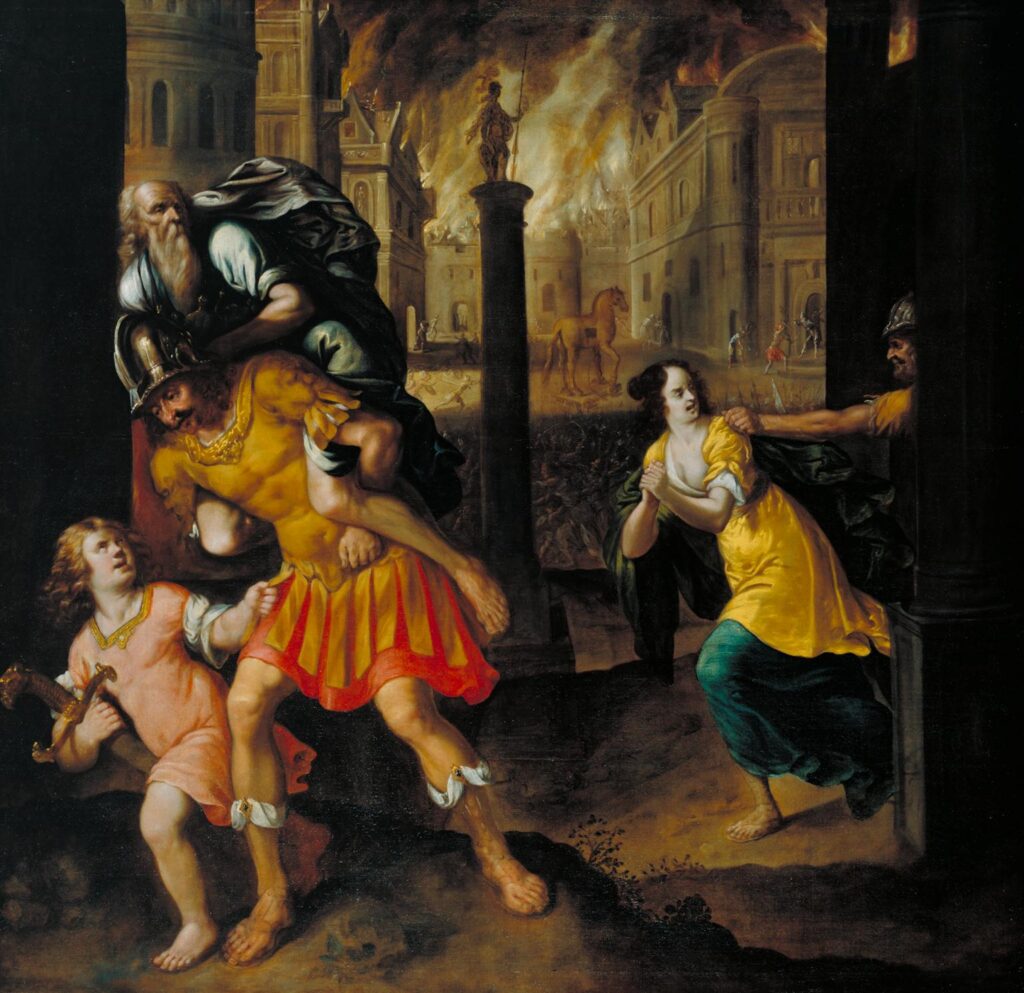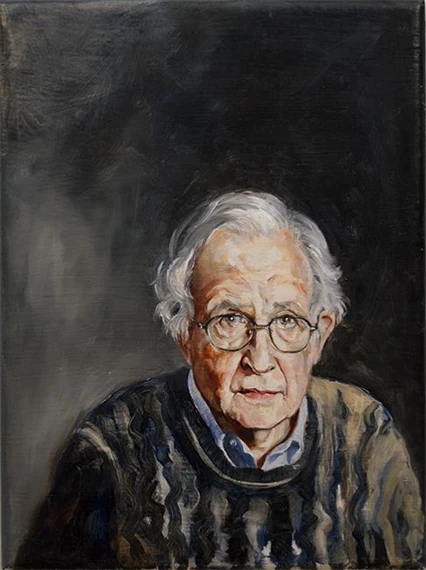Shaping heroism, a concept between myth and reality
by Mihaela Manolache
The concept of heroism has been in the attention of artists, philosophers, and writers since ancient times. Models of virtues, perfection, and beauty, heroes and heroines have inspired people and remained in humanity’s memory for centuries. From the Trojan war to the Crucifixion and later, to the remarkable leaders of modern history such as Napoleon, Mandela, or Gandhi, people describe by their deeds what truly makes a hero. For some was a divine birth, for others was integrity, destiny, bravery, and honour. One thing is for sure: their stories became a prototype of perfection and provided a pattern for ordinary people about how they should righteously live their lives.
GET MORE FROM LEVEL

Heroes represent not only the cherished figures painted on the canvas but also a list of moral values that has the power to influence and create social norms. Heroes have won legendary wars, defeated supernatural creatures, led people to freedom, and changed entire societies. Today we admire and appreciate the sacrifice and the fight for justice, regardless of its nature, of those that did everything they could to improve our world and make each of our lives better. Artists and art depicted for hundreds of years in large-scale narratives daring heroes and magnificent rulers, sharing in their works moral messages.
La lutte c’est la vie!
(Fight is life – french)
Since immemorial times from generation to generation people transmitted virtues and skills that count in becoming a hero. And almost always the heroic figure was an important leader, a tribe chief, a king, or a deity. Achilles, Hercules, Priam, Odysseus, Jason, Leonidas are just some of the most popular examples of past heroes – invincible in battle, civilised, honourable, wise, and worthy. To die in battle was the supreme goal and heroic deeds are sung in eternity by the following generations. Early Antiquity sagas like Gilgamesh or Iliad created the cultural foundation for the Greek and Roman ascension. Other great civilisations existed in other parts of the world as well. See for example Egypt, Persia, China, or India.

However, not all idolised figures were semi-deities or kings and not only military skills were worshiped. Aeneas, who fled Troy during the war, is considered today the legendary founder of the great Roman Empire. The Egyptian architects Cheops (or Khufu), Chephren (Khafre) and Mycerinus (Menkaure) are treasured for their genius and for their masterpieces – the great pyramids which still stand today after more than 4.000 years of existence. Jesus, the founder of the Christian religion or Confucius, a mentor, a philosopher and the paragon of Chinese sages are other examples of impressive humans.
People immortalised these personalities because of their achievements, and their enlightened approach toward political, cultural, or military rule. Artists in the past painted or sculpted portraits of them, writers created verses, and musicians sang songs, establishing high standards of how or what a hero should look like. After centuries we see that heroic people are great not because of the history they’ve witnessed but due to their beliefs. Heroes kept fighting for an ideal; they stood tall in front of the danger and confronted it with respect and intelligence. La lutte c’est la vie is what French people would say, and never giving up is the only way to achieve eternity.
Faces of contemporary heroes
Nowadays, the hero and heroism business is much more complicated to separate from our daily lives. This is because the concept of who can become a hero has shifted from the few chosen ones/the elite to the ordinary people who make important sacrifices to help others. In the end, ordinary people can also fight for a cause and make a change. We don’t live in the world of epic heroes anymore, but in a world of constant change, with never-ending obstacles and struggle to stimulate progress and tolerance, eradicate diseases, abolish famine, and discourage violence and sufferance.
The Persian king Cyrus the Great, even after 2.500 years is still seen as an example of human understanding. He ordered in 593 B.C. a document carved on a cylinder in which the king stated that under his rule people of all races, nationalities, and religions should be treated equally. The Iranian Shah Mohammad Reza Pahlavi called Cyrus’s Cylinder “a chart of human rights” due to his heritage and a replica of that cylinder is exhibited today inside the United Nations headquarters, in New York.

Since the liberation of art, history has noted many people worthy of artists’ attention. The revolution began with the French realism movement, in the 19th century, which left behind mythology and focused on daily activities, like farming, gardening, and cooking. Society witnessed a revolution in art when Napoleon was deposed in favor of ordinary people, with struggles and moments of happiness. Suddenly, the routine of the mass has something beautiful to offer and from background characters workers became the main actors of the scene.
It is easy to understand that progress is made if accepted and adopted by many. We all contribute in a way, smaller or bigger, to help society to grow and provide better social, political, and cultural standards. Today we all count and contemporary art has some great examples of heroes that live just next to us.
Heroes and Artists
Similar to French artists Courbet, David, Millet, or Manet, contemporary artists feel that they live in heroic times and transform everyday life figures into heroic characters. Between 2020 – 2022, in Great Britain alone, amidst the Covid crisis, more than 500 artists turned their attention toward the National Health System and its employees. The NHS heroes are not painted with shields and capes but with masks and protective suits. Tom Croft’s “Harriet” became widely popular on social networks and embodies the efforts made by the front-line workers against coronavirus. Many other artists joined and in the end, a beautiful art project was outlined and exhibited.
When the American contemporary figurative artist Carole Freeman imagined her project “Unsung” in 2018, she was not experiencing any traumatic events. Still, she featured in her 24 paintings normal people who deserved to be heralded more. Freeman thought of portraits of little-known or not-well-enough-known heroes, such as urban activist Jane Jacobs or scientist Rachel Carson. She dared to define the hero, according to her belief: “A hero is someone who goes beyond their job, takes issues on personally and dedicates their entire life to it with possibly no rewards at the end.” Freeman as an artist is accomplishing her part of the story by dedicating her skills to bringing awareness and sending moral messages through her art.

Community Heroes in Portraiture project by artist Janet Wentworth Erickson also looks at the nearby heroes. She explores the history of each individual contextualised. She offers value to local citizens that contributed to the welfare of the community. Wentworth managed to create an identity for our heroes, a sense of local ownership and also to send moral messages to future generations.
From one side, it seems artists forged heroes by giving them a voice and a face, but in reality heroes and acts of heroism mean building up deeds and defending a noble goal every day. Art will always enlarge likeness as its purpose is to immortalise unique and powerful messages. Art will crystallise a form and a face of contemporary heroes in our minds, in the collective unconscious, a form structured by description, testimonials, writings and today by digital photos and online appreciations. The perception is very wide – from single mothers who raise their children to war heroes or state presidents. In time for sure people will transform individuals into archetypes, but this only reveals the fact that these people are relevant to us, to our world and to the present moment we find ourselves in.

Leave a Reply